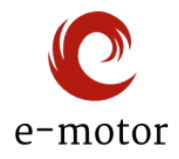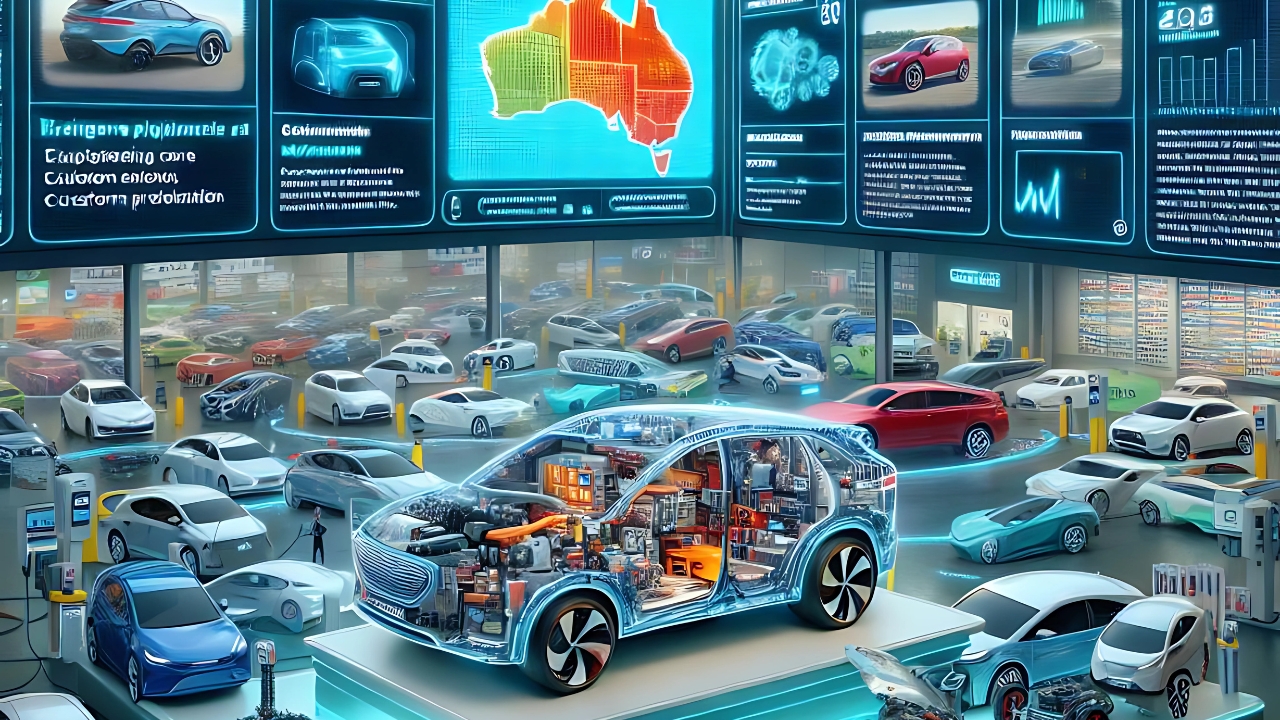BYD’s Lightning Rise: Mate, if you’d told me five years ago that a Chinese car company would be giving Tesla a serious run for its money in Australia, I’d have laughed. But here we are in 2025, and BYD is absolutely smashing it Down Under. What started as a quiet entry into our market has turned into a proper electric revolution.
The numbers don’t lie – BYD has hit 40,000 total sales since launching in late 2022, and they’re planning to double that figure by year’s end. That’s not just impressive; it’s downright phenomenal for a brand most Aussies hadn’t heard of three years ago.
Tesla’s Throne Under Threat: The Changing EV Landscape
Let’s get real about what’s happening in our EV market. Tesla still dominates with around 42% market share, but their grip is loosening faster than a worn-out brake cable. The Model Y and Model 3 are still top sellers, but Tesla sales dropped 61.9% in early 2025 compared to the same period last year.
BYD jumped to second place in the EV race, overtaking MG in recent months. The Sealion 7 SUV claimed the top spot in April 2025 with 743 sales, while the trusty Atto 3 grabbed third place with 355 units. That’s a massive shift from when BYD was just another unknown Chinese brand trying to crack our market.
The writing’s on the wall – Australian buyers are embracing Chinese EVs like never before. We’re talking about roughly one-third of all EVs sold here now coming from Chinese manufacturers, and that number climbs to over two-thirds if you include Tesla’s China-made vehicles.
BYD vs The Competition: How It All Stacks Up
MG’s Fighting Back MG isn’t going down without a fight. They’ve maintained their position as a strong competitor, particularly with the MG4 hatchback holding third place in overall EV sales. Their new S5 EV is launching to take on the Atto 3 directly, priced between $500-$2,500 cheaper than BYD’s popular SUV.
The competition is getting spicy. MG’s strategy of undercutting BYD on price while offering similar tech and features is creating some serious consumer dilemmas. Do you go with the established Chinese player (MG) or the newcomer that’s making waves (BYD)?
Hyundai’s Steady Game Hyundai continues playing the long game with solid, reliable EVs. Their Kona Electric and upcoming Inster (which could be Australia’s cheapest EV) show they’re not giving up market share without a fight. Hyundai’s 11.3% growth in 2024 proves their approach of quality over flashy marketing is working.
While Hyundai doesn’t have the explosive growth of BYD, they’re building a loyal customer base who value reliability and proven technology. The Korean giant is betting on their established dealer network and service reputation to compete against the Chinese onslaught.
The Models Driving BYD’s Success
Atto 3: The Game Changer The Atto 3 compact SUV was BYD’s first proper hit in Australia. Starting at $39,990 for the Essential model, it hit that sweet spot of being affordable enough for mainstream buyers while packing impressive tech. With 5,751 sales in 2024, it proved Australian families were ready for a Chinese EV.
What makes the Atto 3 special isn’t just the price – it’s the whole package. Decent range, practical interior, and enough gadgets to keep tech-heads happy. Plus, BYD’s blade battery technology gives it a safety edge that appeals to cautious buyers.
Seal: Premium Done Right The Seal sedan (6,393 sales in 2024) showed BYD could do premium too. It’s their answer to the Tesla Model 3, with sleek styling and impressive performance figures. For buyers wanting something more sophisticated than the Atto 3, the Seal delivers without breaking the bank.
Sealion 7: The New Sheriff The Sealion 7 is BYD’s latest weapon, and it’s working brilliantly. Taking the top EV sales spot in April 2025 with 743 units shows Australian buyers are loving what this SUV offers. It’s bigger than the Atto 3, more family-friendly, and positioned perfectly to compete with Tesla’s Model Y.
What’s Driving BYD’s Aussie Success Story
Pricing That Makes Sense Let’s be honest – BYD’s aggressive pricing is a huge factor. When you can get a well-equipped electric SUV for under $40k, suddenly EVs don’t seem like rich people’s toys anymore. Compare that to premium European offerings that start north of $60k, and you can see why regular Aussies are paying attention.
The brand’s strategy of offering competitive features at lower prices is working perfectly in our price-sensitive market. Air conditioning, infotainment systems, and safety tech that would be expensive options elsewhere come standard on BYD vehicles.
Government Support Helping State government rebates and federal tax benefits are making EVs more attractive than ever. In some states, you can save up to $6,000 on an EV purchase, which makes models like the Atto 3 genuinely competitive with petrol alternatives.
Build Quality Surprising Critics Early skeptics worried about Chinese build quality, but BYD’s vehicles are genuinely well-made. The materials feel solid, the tech works properly, and reliability has been impressive so far. That’s crucial for winning over Australian buyers who remember when “made in Japan” and “made in Korea” had similar quality concerns decades ago.
The Hybrid Strategy: BYD’s Secret Weapon

Here’s where BYD gets really clever – they’re not just about pure EVs. Their plug-in hybrid (PHEV) lineup is absolutely crushing it. The Sealion 6 PHEV and Shark 6 ute are bringing customers who aren’t quite ready for full electric driving.
The Shark 6 represents something special – Australia’s first PHEV ute. With 1,293 sales in its first month, it’s clear Aussie tradies and outdoor enthusiasts are keen on electric tech that doesn’t compromise their weekend adventures.
This dual approach is smart. While competitors focus purely on EVs or stick with traditional engines, BYD offers both electric and hybrid solutions. It’s capturing buyers at every stage of the electric transition.
Looking Ahead: Can BYD Overtake Tesla?
The Numbers Game BYD sold 20,458 vehicles in 2024, well short of their 25,000 target but still representing 65% growth. With plans to double sales in 2025, they’re clearly not slowing down. Tesla’s declining numbers and BYD’s aggressive expansion suggest 2025 could be the year we see a real changing of the guard.
Expanding Dealer Network EVDirect (BYD’s Australian distributor) is opening 30 more dealerships over the next 18 months, bringing their total to 55. That’s crucial for customer confidence – people want to know they can get their car serviced locally.
Fleet Sales Push BYD’s pushing hard into fleet sales with companies like Uber. That’s smart business – fleet vehicles rack up serious kilometers and create brand awareness among potential private buyers who experience the cars as passengers.
Challenges on the Horizon
Service Network Concerns While BYD’s expanding rapidly, their service network still lags behind established brands. That’s a real concern for buyers outside major cities who worry about getting warranty work done locally.
Brand Recognition Despite the sales success, many Australians still don’t know BYD. Building lasting brand loyalty takes time, especially when competing against established names like Toyota and Tesla.
Political Headwinds With tensions between Australia and China occasionally flaring up, there’s always risk of political factors affecting Chinese car sales. BYD will need to navigate these waters carefully.
The Bottom Line: What This Means for Aussie Car Buyers
More Choice, Better Prices BYD’s success is fantastic news for anyone shopping for an EV. Competition drives innovation and keeps prices competitive. Whether you buy BYD or not, you’re benefiting from the pressure they’re putting on other manufacturers.
Technology Advancement Chinese manufacturers are pushing battery technology, charging speeds, and interior tech forward rapidly. Features that were premium options just a few years ago are becoming standard across the board.
Mainstream EV Adoption BYD’s success proves EVs are moving mainstream in Australia. When a Chinese startup can challenge Tesla and established European brands, it shows the technology has matured and prices have reached acceptable levels for regular families.
FAQs
Q: Is BYD reliable compared to established brands? A: Early reliability reports are positive, with BYD vehicles matching quality expectations for their price range.
Q: Can I get my BYD serviced anywhere in Australia? A: BYD is expanding their dealer network to 55 locations, but coverage in rural areas may still be limited.
Q: How does BYD’s warranty compare to competitors? A: BYD offers competitive warranties, typically 6-8 years depending on the model and component.
The electric revolution in Australia isn’t just coming – it’s here, and BYD is leading the charge. Whether they can maintain this momentum and actually overtake Tesla remains to be seen, but one thing’s certain: the days of Tesla having the EV market to themselves are well and truly over. For Australian car buyers, that’s brilliant news.

